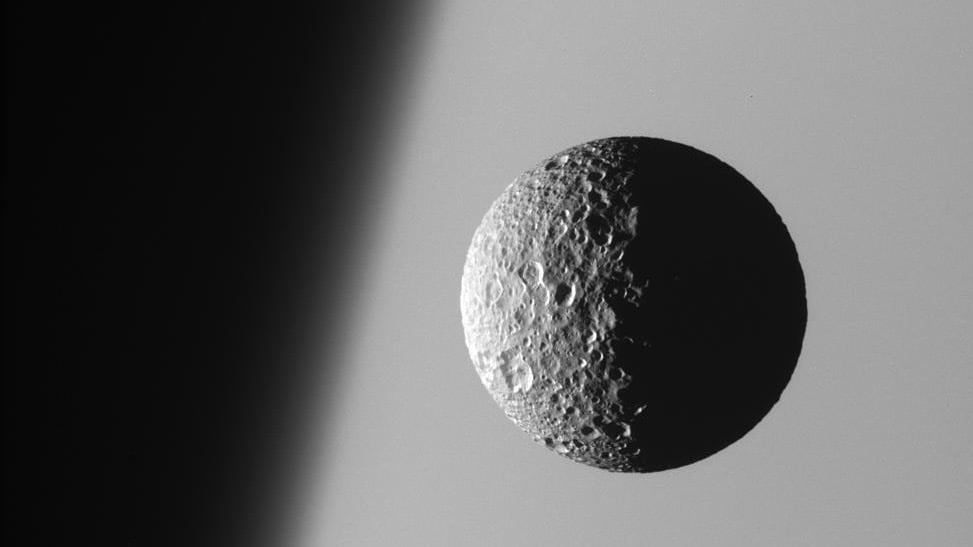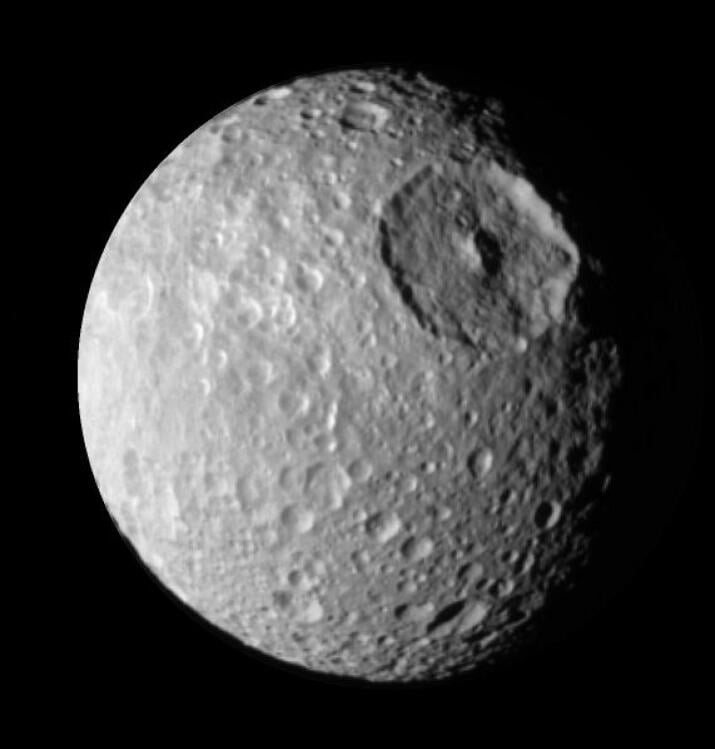Saturn’s ‘Death Star’ moon has been keeping a big secret

A moon of Saturn that bears a striking resemblance to Star Wars‘ Death Star has been holding a secret — and it’s not the Galactic Empire’s favorite world-obliterating space weapon.
Mimas, one of the planet’s 146 moons, most likely has an ocean brewing under its entire icy shell, according to new evidence recently published in the journal Nature.
Though previous research has suggested the tiny moon could have water beneath its lackluster surface, the study, led by astronomer Valéry Lainey at the Paris Observatory, presents the most compelling case yet, contradicting other theories that its interior is solid. That makes Mimas the ninth place in the solar system believed to have sloshy seas — counting Earth among the lot, of course.
“The existence of a recently formed liquid water ocean makes Mimas a prime candidate for study for researchers investigating the origin of life,” said Nick Cooper, co-author of the study from Queen Mary University of London, in a statement.
For life to emerge — at least the kind we know about — three key ingredients are necessary, according to NASA: energy, organic molecules, and water. Mimas is just the latest in a growing list of ocean worlds in the sun’s neighborhood. Others include Saturn’s moons Titan and Enceladus; Jupiter’s moons Europa, Ganymede, and Callisto; Neptune’s moon Triton; and Pluto.
Mimas’ ocean comes as a surprise to many astronomers because it lacks the outward signs: It doesn’t have fractures on the surface or geysers spraying water, like Enceladus and Europa, or a thick atmosphere, like Titan, said Lainey during a livestreamed SETI Institute interview this week.
That makes it “one of the most unlikely places” an astronomer would think to find liquid water — at least at first glance, he said.
“It looks like a very rigid, cold satellite,” he said. “You might say ‘boring.'”
Now the 250-mile-wide moon could give astronomers new insight into the early, primitive phases of ocean worlds. While Earth’s seas are about 4 billion years old — meaning they’re thought to have existed almost since the time the planet formed — Mimas’ water might only be 5 to 15 million years old.
“It looks like a very rigid, cold satellite. You might say ‘boring.'”
The research team was able to estimate this age using prior data from the Cassini spacecraft on the moon’s tidal interactions with Saturn. The NASA probe explored Saturn and its moons between 2004 and 2017. Crucially, by observing wobbles and slight changes in the moon’s orbit, scientists could reason that a hidden ocean exists.
The information also helped them estimate its depth. Lainey’s team combined the Cassini observations with computer simulations to figure an ocean must be about 12 to 18 miles below the crust.

During the SETI Institute interview, the French astronomer explained why then there would be no traces of water in Mimas’ gigantic Herschel Crater, its most defining and “Death Star”-like feature.
For one, the crater is shallower than the sea. But there’s another reason.
“It’s also pretty clear that the Herschel Crater arrived much before the ocean itself,” Lainey said.
